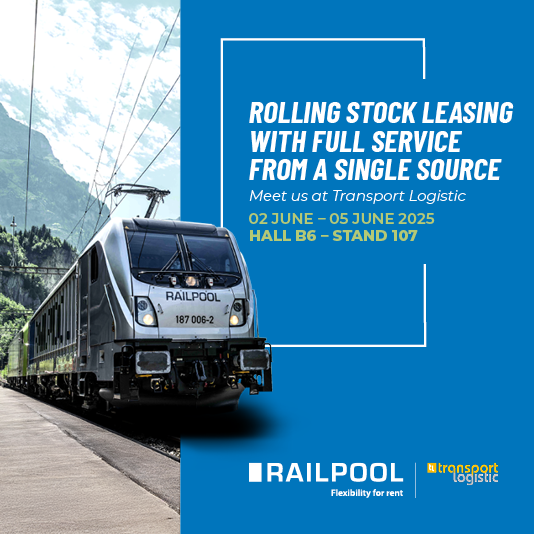News
filtered by: categories.category Urban transport Filter by category Filter by tag
- 16Ev 12
- 189 4
- 2050.LAB 7
- 2ES5S 3
- 2ES6 8
- 2ES6A 5
- 2ES7 8
- 2ES8 5
- 2TE25KM 12
- 2TE35A 9
- 363.5 3
- 380 10
- 390 3
- 398 3
- 3ES5S 3
- 3ES8 6
- 3TE25K2M 5
- 3TE28 8
- 443 3
- 480 3
- 483 4
- 484 4
- 555 13
- 561 3
- 61-4523 3
- 665 5
- 777 18
- 847 3
- accident 4
- Adessia 3
- Adif 19
- ADY 10
- Aeroexpress 8
- Akiem 22
- Alpha Trains 23
- Alstom 302
- Alternative energy 4
- Ampz 3
- Amtrak 5
- Angel Trains 7
- AnsaldoBreda 3
- APM 4
- ArcelorMittal 5
- Arenaways 4
- ARF 10
- ARRIVA 16
- ARRIVA vlaky 7
- Artic 7
- ASTRA Vagoane 4
- ATM 4
- ATO 8
- Avanti West Coast 8
- AVE 6
- Avelia 4
- Avenio 9
- Aventra 8
- AVG 3
- AVLO 3
- Avril 12
- AWT 8
- Baden-Württemberg 4
- Baltiets 3
- Bane NOR 6
- BCh 9
- BDZ 15
- Beacon Rail 9
- BEG 10
- BEMU 55
- Bison 6
- BLS 5
- Blues 3
- BMZ 43
- Bombardier 176
- BORCAD 3
- Bratislava 3
- Budamar 8
- BVG 5
- CAF 82
- Capricorn 6
- Captrain 8
- Cargonet 3
- CARGOUNIT 6
- CBTC 6
- ČD 159
- ČD Cargo 51
- CER 4
- CFL 12
- CFL Cargo 5
- CFR 3
- Chalupki 3
- Charger 4
- China 7
- China Railway 4
- Citadis 19
- Citylink 11
- Civity 15
- Coach 122
- Comfortjet 15
- Continental 3
- Coradia 71
- Coradia Stream 32
- coupling 3
- CPK 13
- CRRC 56
- CZ LOKO 58
- DAC 7
- DB 144
- DB Cargo 11
- DE18 12
- Desiro 56
- Desiro HC 4
- DJJ 12
- DLR 4
- DM 20 3
- DMU 74
- DMZ 26
- DPO 10
- DPOV 3
- Dr19 3
- Dragon 23
- DSB 13
- EDMU 25
- EffiLiner 6
- EffiShunter 32
- EG2Tv 5
- Egypt 6
- EHMU 3
- EKZ 6
- Electrostar 8
- Elektriraudtee 4
- ELF 8
- Elga-Trans 3
- ELL 30
- ELP 18
- Elron 9
- EMKA 4
- EMR 4
- EMU 589
- ENR 29
- EP Cargo 6
- EP20 3
- EP2D 15
- EP2DM 4
- EP3D 6
- Ermewa 5
- ERTMS 4
- ES104 5
- ES64U4 3
- ETCS 61
- ETR 1000 6
- EURO4001 4
- EURO6000 12
- EURO9000 14
- EURODual 32
- EuroLight 6
- European Sleeper 4
- Eurosprinter 7
- Eurostar 20
- EVB 3
- Eversholt 3
- Evolution 12
- EvroKhim 3
- EXPO 1520 3
- FeliX 4
- FGC 7
- Flexity 16
- FLIRT 130
- FLIRT AKKU 13
- FLIRT H2 3
- FLIRTNEX 3
- FlixTrain 7
- Flytoget 5
- FNM 9
- ForCity 27
- FPK 12
- FPS 7
- FRACHTbahn 3
- Frecciarossa 3
- FS 5
- Fuxing 3
- FV-Dosto 3
- G 6 4
- G1 3
- Gama 11
- Gazpromtrans 3
- GBRf 13
- GE 12
- Giruno 5
- Go-Ahead 9
- Göteborg 10
- Göteborgs Hamn 8
- Govia 3
- GPX 3
- Granit 10
- Greater Anglia 4
- Green Cargo 29
- Griffin 17
- GTLK 4
- GTR 11
- GTW 16
- GTW 2/6 5
- GYSEV 8
- H2 5
- HDB 800 3
- HEMU 3
- Herrenknecht 6
- HHLA 7
- HHPI 3
- Hitachi 40
- HKL 3
- HMU 34
- HS2 115
- HSE 4
- HSL 13
- Hübner 13
- HVLE 4
- Hydrogen 5
- Hyperloop 17
- Hyundai 4
- ICE 25
- ICNG 8
- ICx 3
- IDS Cargo 4
- Ile-de-France 6
- iLint 10
- Impuls 8
- Indian Railways 14
- Innofreight 9
- InnoTrans 93
- Inspiro 11
- InterJet 6
- InterRail 4
- IRSI 3
- Iryo 8
- ISR 5
- ITL 4
- Ivolga 13
- Japan 41
- JR East 10
- Kawasaki 3
- Keolis 10
- Kiepe 3
- Kinki Sharyo 6
- Kintetsu 3
- KISS 74
- KM 7
- Knorr-Bremse 12
- Kraków 3
- KTZ 29
- KVSZ 3
- KZ 9
- KZ4AT 5
- KZ8A 8
- Lajkonik 3
- Lastochka 27
- Laude 9
- LEO 23
- Liebherr 17
- Lineas 9
- LINK 23
- LINT 9
- LKZ 10
- LNVG 9
- locomotive 527
- LOTOS Kolej 4
- LTE 5
- LTG 3
- LTG Cargo 3
- LTZ 16
- LU 4
- Łódź 3
- M7 5
- Malakhit 6
- Mariazellerbahn 3
- MÁV 20
- Medway 5
- Mercitalia 6
- Merseyrail 17
- METRANS 26
- Metro 101
- Metro Warszawskie 5
- Metropolis 3
- Metrovagonmash 19
- Mireo 35
- Mireo Plus B 5
- Mitsubishi 4
- Modula 3
- Moskva 8
- MOvia 6
- MPK Krakow 10
- MPV 3
- MRCE 6
- MSC 4
- MSK 4
- MSV elektronika 3
- MVM 6
- N700S 3
- NAH.SH 5
- NCRTC 4
- NEB 5
- Network Rail 3
- NEVZ 22
- Newag 48
- Nexrail 4
- Nexus 25
- Nightjet 19
- NIM Express 13
- NJT 3
- NMU 39
- Norske Tog 12
- Northrail 9
- nOVA 4
- NÖVOG 4
- NS 22
- Nymwag CS 6
- Oaris 7
- ÖBB 85
- Oberpfalzbahn 4
- ODEG 6
- OEVRZ 3
- OMNEO 7
- ONCF 4
- Operail 3
- Orlen 3
- OUIGO 7
- OVK 43
- Oxygène 3
- OŽ 3
- Panter 10
- Pardubice 3
- Paribus 6
- Pars nova 4
- Pasažieru vilciens 15
- PCC Intermodal 4
- Pendolino 22
- PESA 69
- PJM 21
- PKP Cargo 22
- PKP Cargo International 3
- PKP IC 37
- PKP Intercity 7
- Plasser & Theurer 7
- POIiŚ 11
- POLREGIO 3
- Porterbrook 9
- PRAHA 3
- Prima 17
- Pro//Motion.Expo 9
- Przewozy Regionalne 3
- PSŽ 5
- RA3 6
- Rail Cargo 6
- Rail Force One 3
- Rail Operations (UK) 3
- RailAdventure 8
- railjet 24
- Railpool 35
- RATP 10
- RBD 6
- RCH 4
- Re 421 4
- Regio160 5
- RegioFox 3
- RegioJet 74
- Régiolis 6
- RegioPanter 47
- RegioShark 4
- RENFE 46
- RER 5
- Retrack 3
- RhB 11
- rnv 3
- road2Link 3
- roadrailLink 3
- ROG 5
- ROUK 3
- RRTS 4
- RRX 4
- RSL 9
- RTA 10
- RTB CARGO 5
- RTS 5
- RZD 165
- S-Bahn Berlin 4
- S-Bahn München 3
- S700 3
- Sakhalin 3
- SALi 4
- Samara 3
- Sapsan 7
- SAR 3
- SBB 29
- SBB Cargo International 4
- SBCTA 5
- Schaeffler 3
- SD-KD 3
- servicejet 4
- SFBW 3
- Shcherbinka 10
- Shinkansen 13
- Siedlce 30
- Siemens 461
- SilkWay 3
- Sinara 57
- Sirius 16
- SJ 5
- Škoda 185
- Smartron 8
- SMILE 3
- Snälltåget 4
- SNCB 13
- SNCF 49
- Sofia 10
- Softronic 8
- Správa železnic 11
- Srbija voz 10
- SSAB 4
- Stadler 426
- Subterra 3
- SWEG 3
- SWING 4
- SŽ 10
- Talbot-Services 3
- Talent 9
- Talgo 46
- Tampere 6
- Tampereen Ratikka 3
- Tango 12
- Tashkent 4
- Tatravagónka 12
- Taurus 27
- TBM 4
- TCDD 9
- TEM11A 3
- TEM18DM 6
- TEM23 8
- TEM9 4
- TEP70BS 3
- TEŽ 6
- TfL 7
- TfW 20
- TGV 24
- Thalys 3
- Thameslink 4
- TINA 6
- TMH 225
- Tokyo metro 5
- Toshiba 4
- TPE 6
- TR Trans Rail 4
- Trainpoint Norway 3
- TRAKO 14
- Tram 125
- tram-train 9
- Tramlink 8
- Transitio 9
- Transmash 4
- Transmontana 7
- Transtech 3
- TRAVCA 3
- TRAXX 119
- Trenitalia 23
- TSA 16
- TSB 3
- TSL-ESCHA 3
- TsPPK 17
- Tulpar-Talgo 4
- TVZ 60
- TWINDEXX 10
- Twist 4
- TX Logistik 5
- UBTZ 4
- UK 29
- Ukraine 14
- UL 57
- Unipetrol Doprava 5
- Uralskie lokomotivy 11
- Urbos 12
- UVZ 3
- UWC 5
- UZ 18
- VAG 12
- Västtrafik 6
- VDV 3
- Vectrain 4
- Vectron 215
- Vectron DM 5
- Velaro 26
- Velaro UK 6
- Venture 3
- Viaggio 43
- VMS 3
- Voith 17
- Vossloh 29
- Vossloh Locomotives 10
- Vossloh Rolling Stock 13
- Voyager 3
- VR 17
- VRR 3
- VTG 19
- VÚKV 5
- VUZ 73
- Wabtec 5
- WAG12 4
- wagon 105
- Wascosa 4
- Wegberg-Wildenrath 13
- WESTbahn 13
- Wien 3
- Wiener Linien 10
- WINDHOFF 3
- WINK 8
- WL 3
- WLC 5
- X-Wagen 9
- X’Trapolis 5
- Yermak 16
- Zefiro 14
- ZF 5
- ZhDYa 3
- Źmigród 28
- ŽOS Vrútky 7
- ŽOS Zvolen 3
- ŽRSM Transport 4
- ŽSR 4
- ZSSK 47
- ZSSK CARGO 8
- ZVMS 6
- ŽZO 21
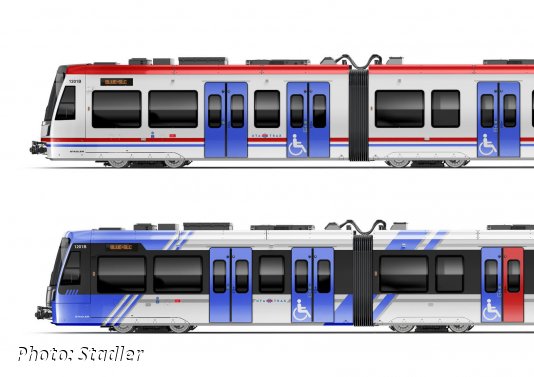
Stadler's first light rail order in the USA
On 24 October, 2024, Stadler and the Utah Transit Authority (UTA) have signed a contract for the delivery of up to 80 new Citylink trams for the TRAX service in Salt Lake City.
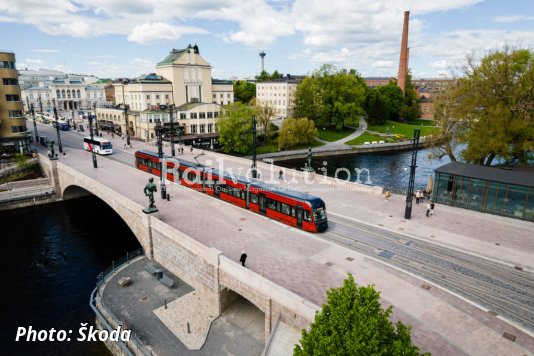
Extension of Tampere's trams
On 26 September 2024, Škoda Group and Tampereen Raitiotie signed in Tampere a contract for the extension of the ForCity Smart Artic X34 trams.
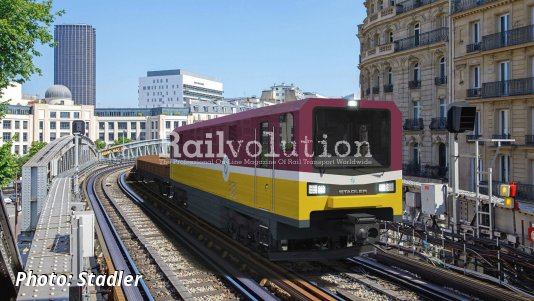
Customised Stadler locomotives for the Paris metro
On 21 October 2024, the Paris metro operator, Régie autonome des transports Parisiens (RATP), has commissioned Stadler to manufacture and supply twelve customised locomotives.

InnoTrans 2024 report (14)
At the stand of ULTIMATE Europe Transportation Equipment entrance doors for new trams, tentatively designated as Škoda ForCity Plus Praha 52T, were on display.
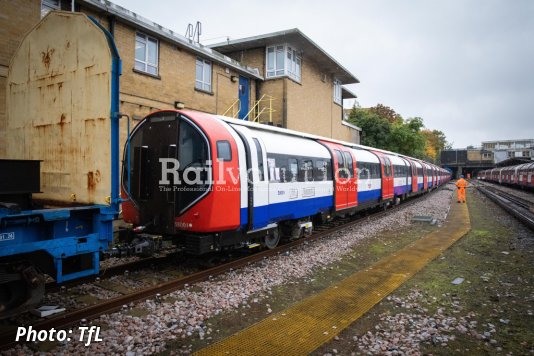
First new Piccadilly line Inspiro arrived in London
On Monday 14 October 2024, the first of the capital's new Piccadilly line trains arrived in London, ahead of a programme of rigorous testing.
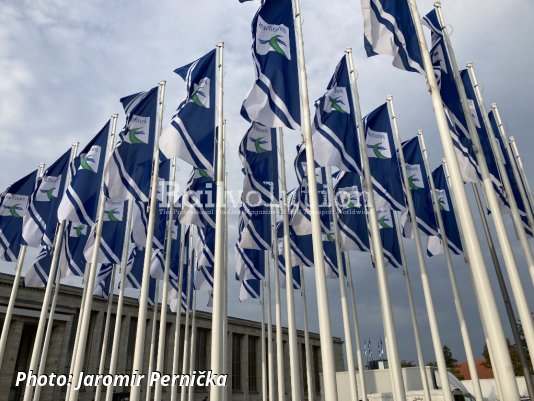
InnoTrans 2024 report (8)
InnoTrans breaks all records - the world's leading trade fair draws a successful balance sheet.
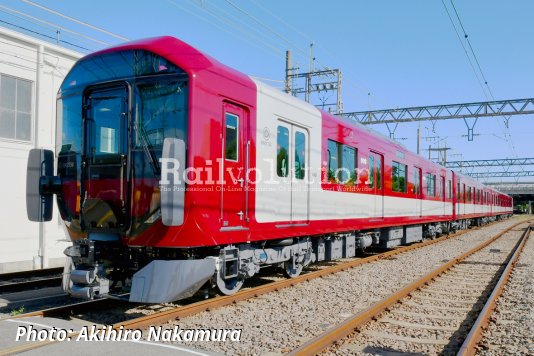
Kintetsu Railway's Class 8A EMUs on the Kyoto Line
A private railway Kintetsu will introduce new Class 8A EMUs on the Kyoto line on 7 October 2024.
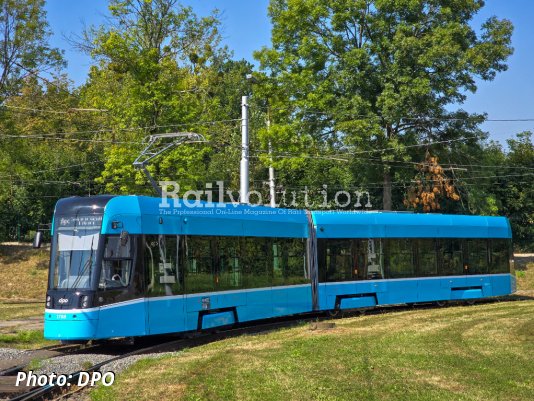
Ostrava's ForCity tram fleet complete
On 30 August 2024, Dopravní podnik Ostrava (DPO) took over the last of 38 trams of the Škoda ForCity Smart 39T type.
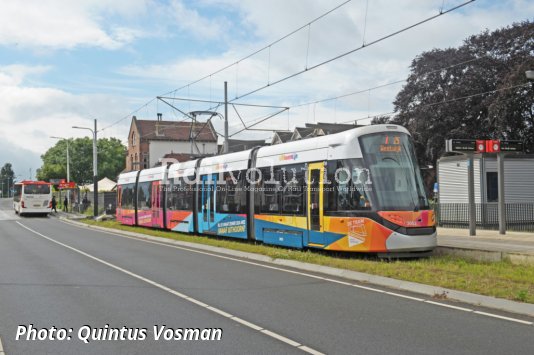
New tramline to Uithoorn inaugurated
Regular tram operations have started on the Uithoornlijn on Sunday 21 July 2024 after the celebration inauguration the day before.
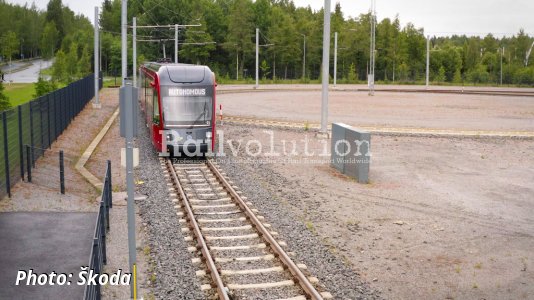
Smart Depot in Tampere
On 18 July 2024 Škoda Group announced that it has successfully demonstrated the first functions of its Smart Depot system, which has enabled the Škoda Smart Artic X34 tram to successfully complete automated movements without the driver.
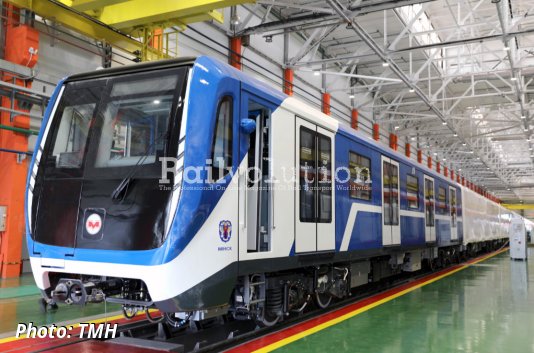
The first Minsk 2024 metro train in Belarus
On 30 July 2024, Metrovagonmash delivered to the Republic of Belarus the first Type Minsk 2024 metro train (Models 81-765.7/766.7) for operation in the Minsk Metro.
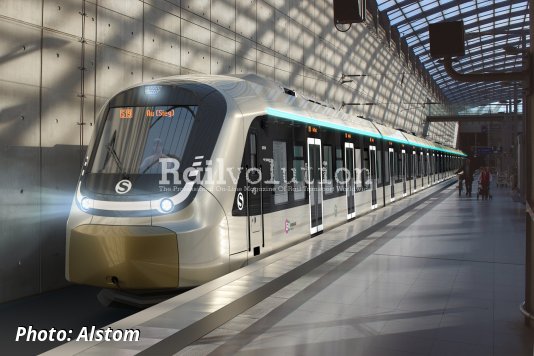
Alstom wins €4 billion contract for its Adessia Stream trains
Alstom has been awarded a contract to supply 90 Adessia Stream commuter trains to local rail passenger transport authorities go.Rheinland and Verkehrsverbund Rhein-Ruhr (VRR) for operation in the S-Bahn Cologne network.
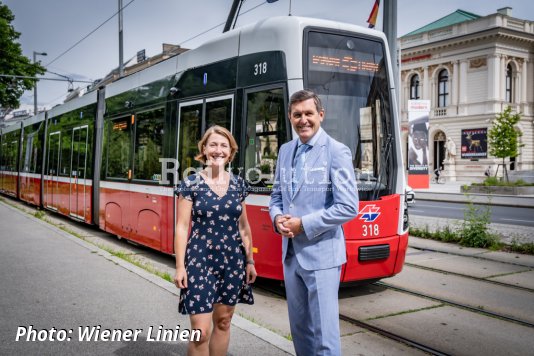
Wiener Linien orders more Flexity trams
City of Vienna and Wiener Linien ordered 27 additional Flexity trams from Alstom.
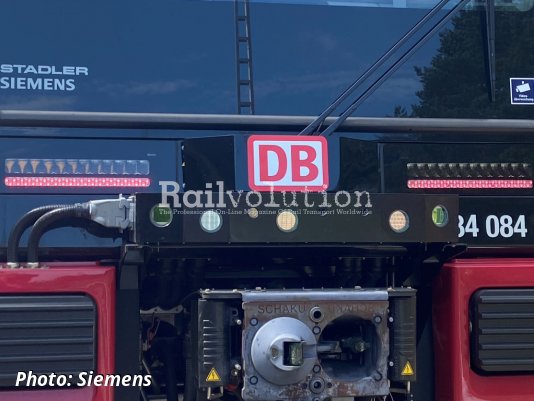
Innovative obstacle detection system is being tested for the first time on the Berlin S-Bahn
Automated operation is a key function for expanding rail capacity and strengthening the performance of railways.


